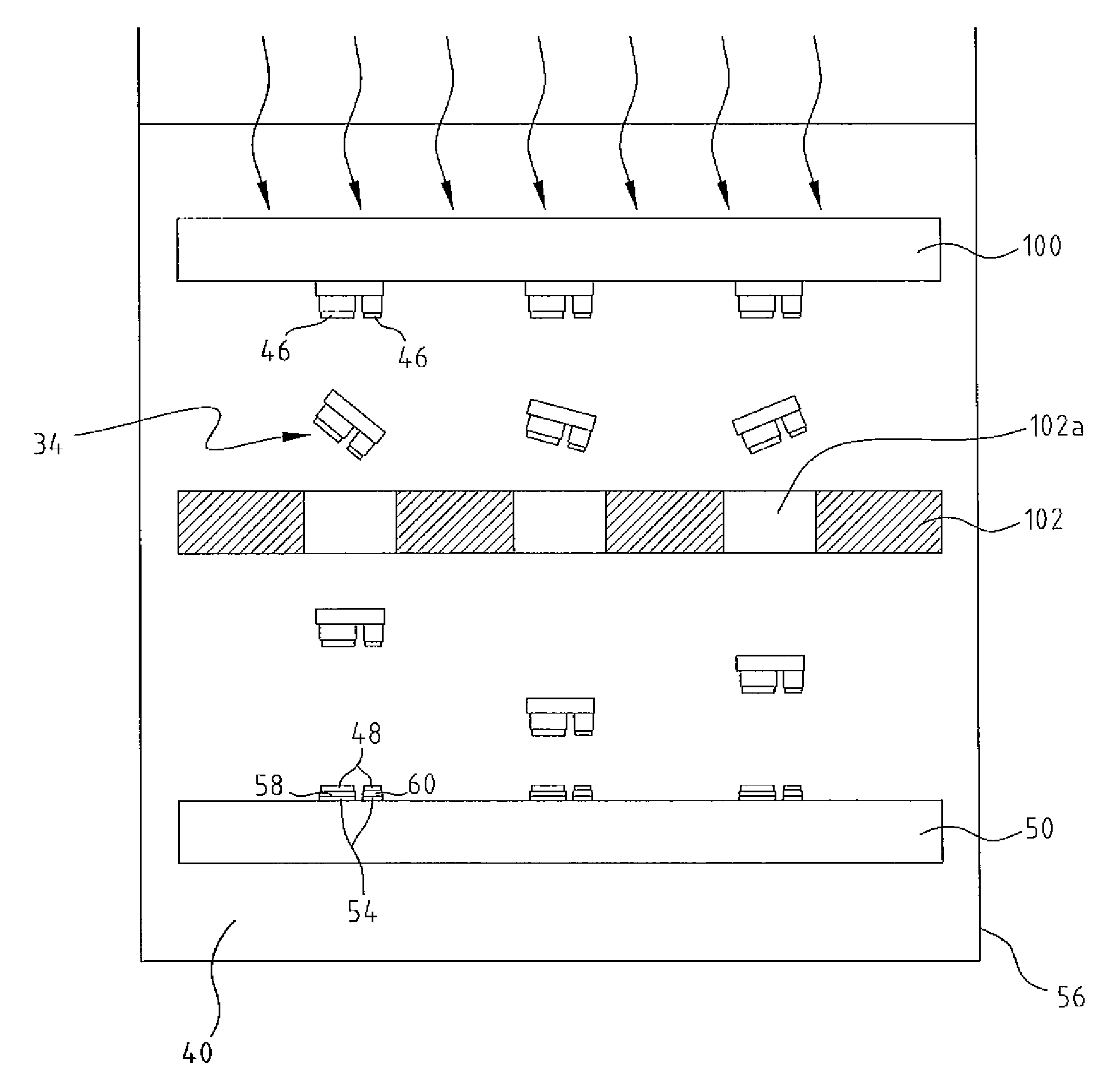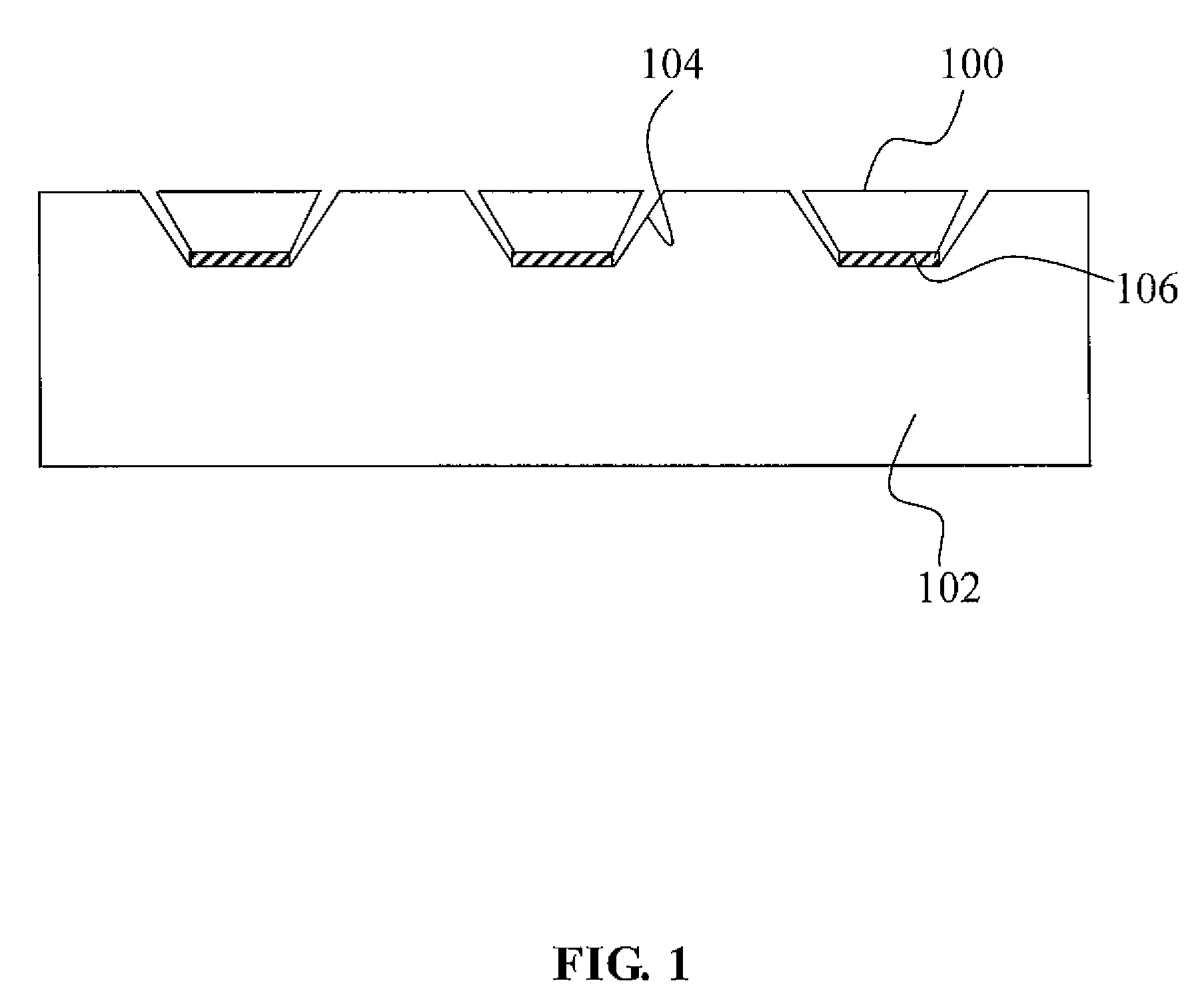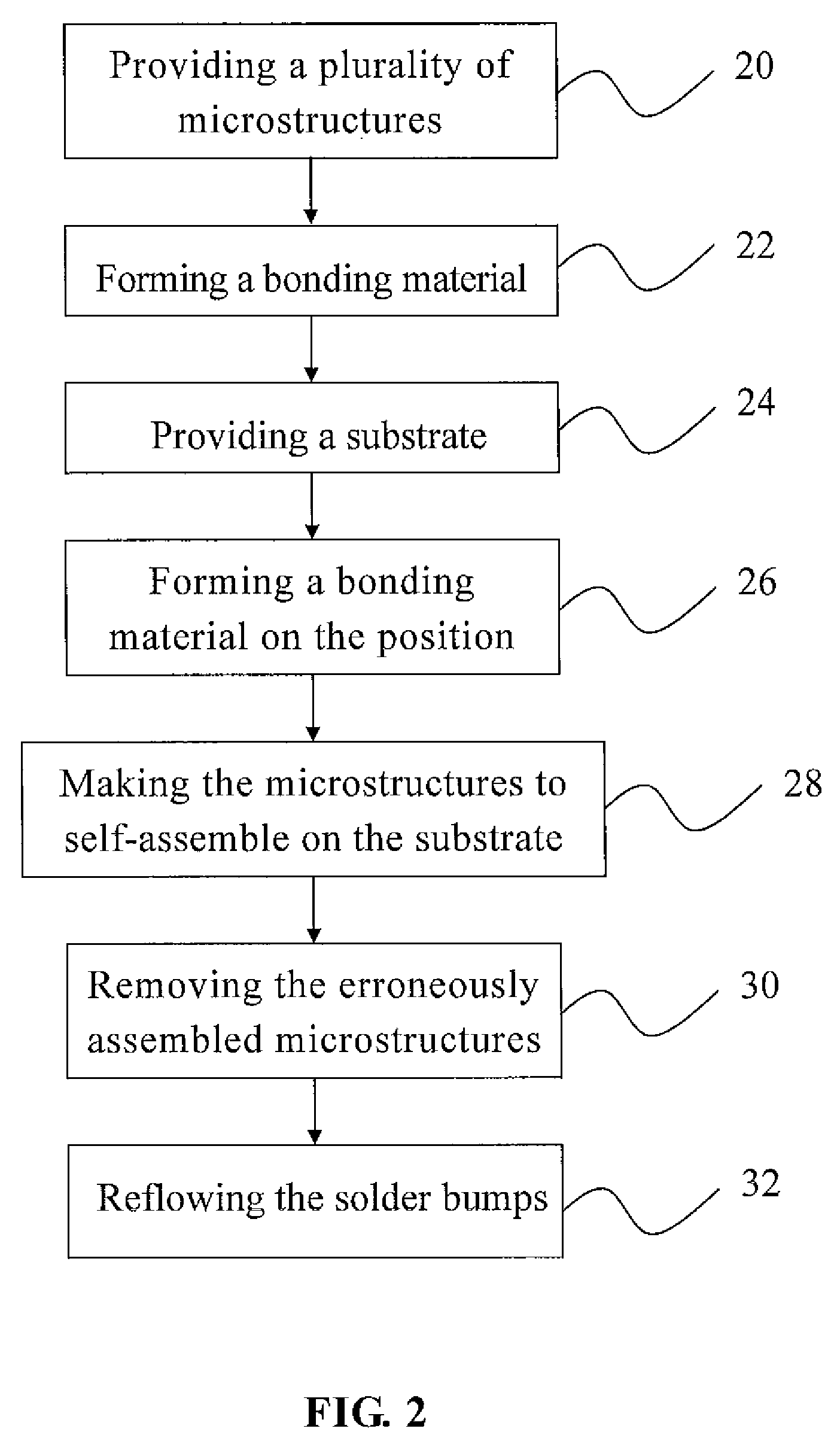Method for self-assembling microstructures
a microstructure and self-assembling technology, applied in the direction of microstructure device assembly, manufacturing tools, solventing apparatus, etc., can solve the problems of not meeting the design goal of the pick-and-place device, the electronic component quantity on the integrated circuit is relatively increased, and the electronic component size is required to be smaller
- Summary
- Abstract
- Description
- Claims
- Application Information
AI Technical Summary
Benefits of technology
Problems solved by technology
Method used
Image
Examples
Embodiment Construction
[0034] With reference to FIG. 2, it is noted that the flow chart of the method of the present invention is providing a plurality of microstructures 20 and forming a bonding material 22 on the surface of the microstructures, respectively. This method is providing a substrate 24, and forming a bonding material on the position 26 for bonding these microstructures onto the substrate. The bonding material used in the present invention may be any material that is able to physically attract to each other, e.g. interface force, field force, electrostatic force, electrophoresis effect etc. However, the examples are for illustrative purpose only and do not intend to limit the scope of the invention. The interface force may be hydrophilic or hydrophobic force but is not limited to the examples. The bonding material of the present invention includes self-assembly monolayers (SAMs), 2-ethyl-1-hexanol, flux, octanol or the equivalents. The field force of the present invention includes natural mag...
PUM
| Property | Measurement | Unit |
|---|---|---|
| Force | aaaaa | aaaaa |
| Flexibility | aaaaa | aaaaa |
| Microstructure | aaaaa | aaaaa |
Abstract
Description
Claims
Application Information
 Login to View More
Login to View More - R&D
- Intellectual Property
- Life Sciences
- Materials
- Tech Scout
- Unparalleled Data Quality
- Higher Quality Content
- 60% Fewer Hallucinations
Browse by: Latest US Patents, China's latest patents, Technical Efficacy Thesaurus, Application Domain, Technology Topic, Popular Technical Reports.
© 2025 PatSnap. All rights reserved.Legal|Privacy policy|Modern Slavery Act Transparency Statement|Sitemap|About US| Contact US: help@patsnap.com



